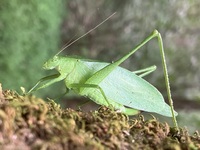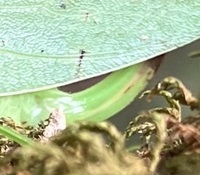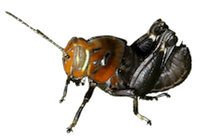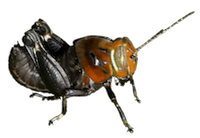| |
Family (Alpha): | |
| View | Tettigoniidae Members:
| NC Records |
|---|
Amblycorypha longinicta Walker, 2004 - Common Virtuoso Katydid |
 |
|
|
|
|
|
Image Gallery for Amblycorypha longinicta - Common Virtuoso Katydid
|
 | Recorded by: Larry Chen, Sarah Toner
Beaufort Co.
Comment: |  | Recorded by: Ken Kneidel
Mecklenburg Co.
Comment: |
 | Recorded by: Ken Kneidel
Mecklenburg Co.
Comment: |
MP3 Gallery for Amblycorypha longinicta - Common Virtuoso Katydid
|
| 1 | Recorded by: Larry Chen, Sarah Toner
Beaufort Co.
2025-09-06
|

 »
»

